Search
To search for an exact match, type the word or phrase you want in quotation marks.
A*DESK has been offering since 2002 contents about criticism and contemporary art. A*DESK has become consolidated thanks to all those who have believed in the project, all those who have followed us, debating, participating and collaborating. Many people have collaborated with A*DESK, and continue to do so. Their efforts, knowledge and belief in the project are what make it grow internationally. At A*DESK we have also generated work for over one hundred professionals in culture, from small collaborations with reviews and classes, to more prolonged and intense collaborations.
At A*DESK we believe in the need for free and universal access to culture and knowledge. We want to carry on being independent, remaining open to more ideas and opinions. If you believe in A*DESK, we need your backing to be able to continue. You can now participate in the project by supporting it. You can choose how much you want to contribute to the project.
You can decide how much you want to bring to the project.
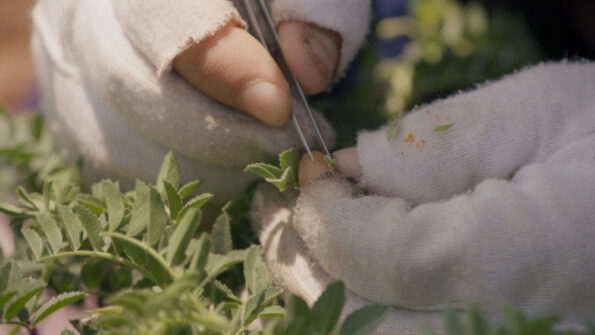
In the last year we have seen several art projects address the complexity of the Mediterranean territory. Among them, El Mediterráneo: un mar redondo (The Mediterranean: A Round Sea) curated by Marina Fokidis, the group exhibition After the Mediterranean by Oriol Fontdevila and Thus Waves Come in Pairs by Barbara Cavecchia. From European shores, this compendium of practices and narratives seek to reflect on the relationship that has always bonded both sides of this border. Undoubtedly, these proposals offer sublime and emotional elements inherent in the cultural character of this entangled place. However, it is difficult to find a profound critique of current problems. Addressing the conflict, borders, extraction and death that have historically plagued this sea, intensifying in recent decades, seems like an uncomfortable and less aesthetically attractive approach. In the last twenty years, the misfortune and horror of the Mediterranean have put European border policies and the lack of regulation in the inclusion and reception processes in the spotlight. The vast and diverse cultural legacy perform along our history by Mediterranean inhabitants is undoubtedly remarkable, but in these moments of current crisis and the redefinition of the post-colonial, it is necessary to address these questions in a direct and critical way.
For this reason, it is worth highlighting the work of Jumana Manna, a Palestinian artist living in Berlin. Her recent exhibition Preservation Paradox (2023) at Matadero Madrid depicts her facet as a filmmaker. The three films showcased, produced sequentially over the last six years, deal with the complexity of agents and elements that coexist in various disputed territories in Palestine and beyond. Through personal stories that give value to the non-material legacy of these places, Manna opens up a world of gestures, species, rituals and vernacular sounds and invites us to constantly ask ourselves about the political hierarchies that originate territorial and cultural conflicts. In her latest work, Foragers(64 min, 2022), the artist analyzes the occupation of Palestine through two protagonists: the ‘akkouband the za’atar, two native plants that grow wild in fields, ditches and even under rocks. In recent years, the Israeli Nature Protection Authority has banned the harvesting of these wild species, putting at risk the survival of the foragers, the majority of whom are Palestinians, who for decades have walked the fields collecting these plants and generating a survival economy from small-scale trade and consumption. Manna’s gaze opens the doors of houses where women prepare ‘akkoubsalads and accompanies the collectors in the darkest moments of police and judicial persecution. Somewhere between fiction and documentary, the film builds a map of gestures that perpetuate beyond the hegemony of land ownership and the cultural borders of the conflict.
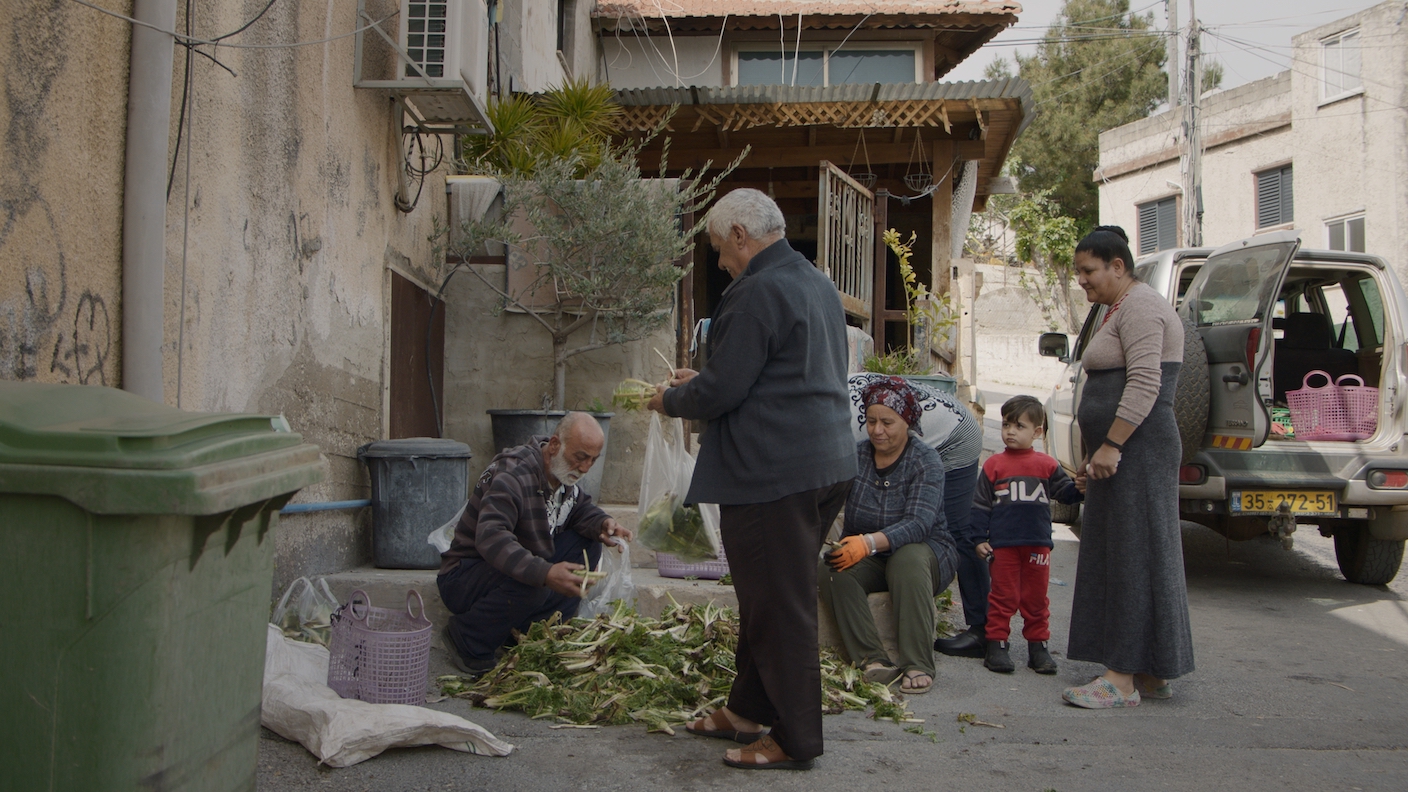
Jumana Manna. Foragers (video still). 2022. HD video. Duration: 64’ © MoMA PS1
On the other hand, Wild Relatives (64min, 2018), reflects on the management of preservation and its regulation on a global scale. Once again, from a botanical perspective, plants and seeds question contemporary ideas of territory, access to resources and borders. Based on three case studies of comparative cases between Middle East and Northern Europe, the artist travels to different seed banks and regions to reveal the institutional politics and protocols behind the origin and maintenance of the seed banks. The film also makes visible the cultural ties that exist within each bank, their geopolitical principles and the relationship between culture and nature in each context. In the case of Syria and Lebanon, this process is traversed by agricultural policies as methods of population control in the region, and, in a latter stage, the impact of wars, firstly in Lebanon and recently in Syria. Originally established in Lebanon, in 1977 the International Center for Agricultural Reasearach in Dry Areas (IRCADIA) was given a land in Tel Hada, south of Aleppo, direct consequence of the civil war in Lebanon. Years letter, the bank moved to Lebanon preserving the categories of local species that are disappearing due to monocultures and successive wars. The Norwegian seed bank in Svalbard exceeds regional approaches to control plantations and plant spices overseas. Using the most advanced technologies for the conservation of biological matter, the Global Seed Vault carries out a worldwide collection under the pretext of preserving and giving continuity to all vegetal species of the planet and to guarantee human survival in the face of an apocalyptic future. Lastly, A Magical Substance Flows into Me (66 min, 2016) portrays the sounds of the Levantine coast transcending rituals and borders, questioning notions of origin and the cultural identification of populations on both sides of the sea, as well as the political and religious regimes installed in the Palestinian territory.
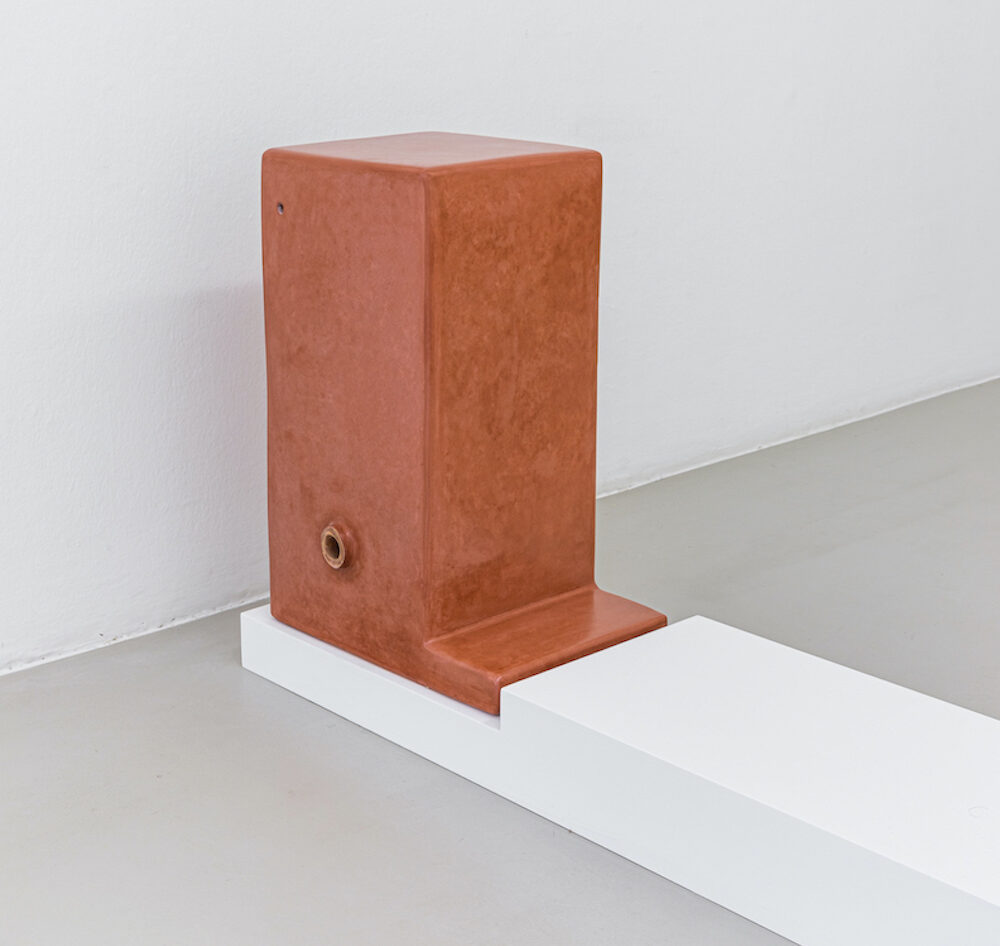
Jumana Manna. Red Ledge, from Cache (Insurance Policy). 2019. Ceramics, concrete, lime, pigments. 75h x 40w x 55d cm © MoMA PS1
The link between her audiovisual and sculpture work concretizes a material fixation of the gestures that Manna collects with her gaze. Cache Series is an ongoing collection of ceramic sculptures inspired by khabyas, traditional food storage devices found in houses in the Levantine area. Other times, her sculptures resemble elements of the transport of goods, such as pipes, or capture the idiosyncrasy of a daily act. These morphologies start from a gesture of identity then drift towards the sculptural, thus capturing an image that describes the singularity of a place and its culture. Manna’s work, with its cinematographic and sculptural languages, generates a living archive of customs and rituals, of smells and flavors, which makes us question whether the preservation of material and non-material legacies is an act that must be orchestrated globally or instead is an immanent condition that transcends the temporality and political dictates of territories. Her fierce desire to capture these frugal elements and its hidden politics helps to make visible the empowerment of the protagonists in each story. Barbarians, in the words of Louisa Yousfi, reverse the given structures of the politics always finding ways to take care of what is common and mundane and to make it their own, resisting cultural theft with the dignity of the ritual but without underestimating the implacable erosion of the forces of dispossession. As Yousfi says, the barbarian embodies pure otherness, a figure that is both poetic and unsettling. The barbarian proposes another way of inhabiting humanity, constantly escaping from what is already established. Manna opens the door to other worlds that are sometimes invisible but resist and, thus, her cinematographic and sculptural work creates a legacy of unsung stories.
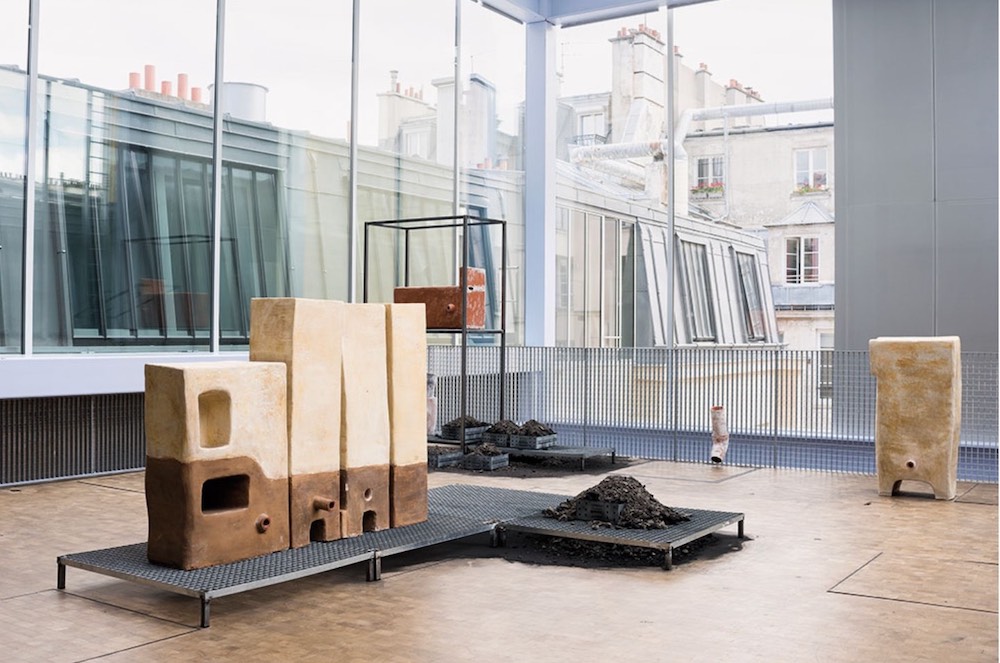
Jumana Manna, Cache (Insurance Policy), 2018. Installation view at Lafayette Anticipations – Fondation d’entreprise Galeries Lafayette, 2018. Produced by Lafayette Anticipations, Paris © Pierre Antoine
(Cover photo: Jumana Manna. Wild Relatives (video still). 2018. HD video. Duration: 64’ © MoMA PS1)
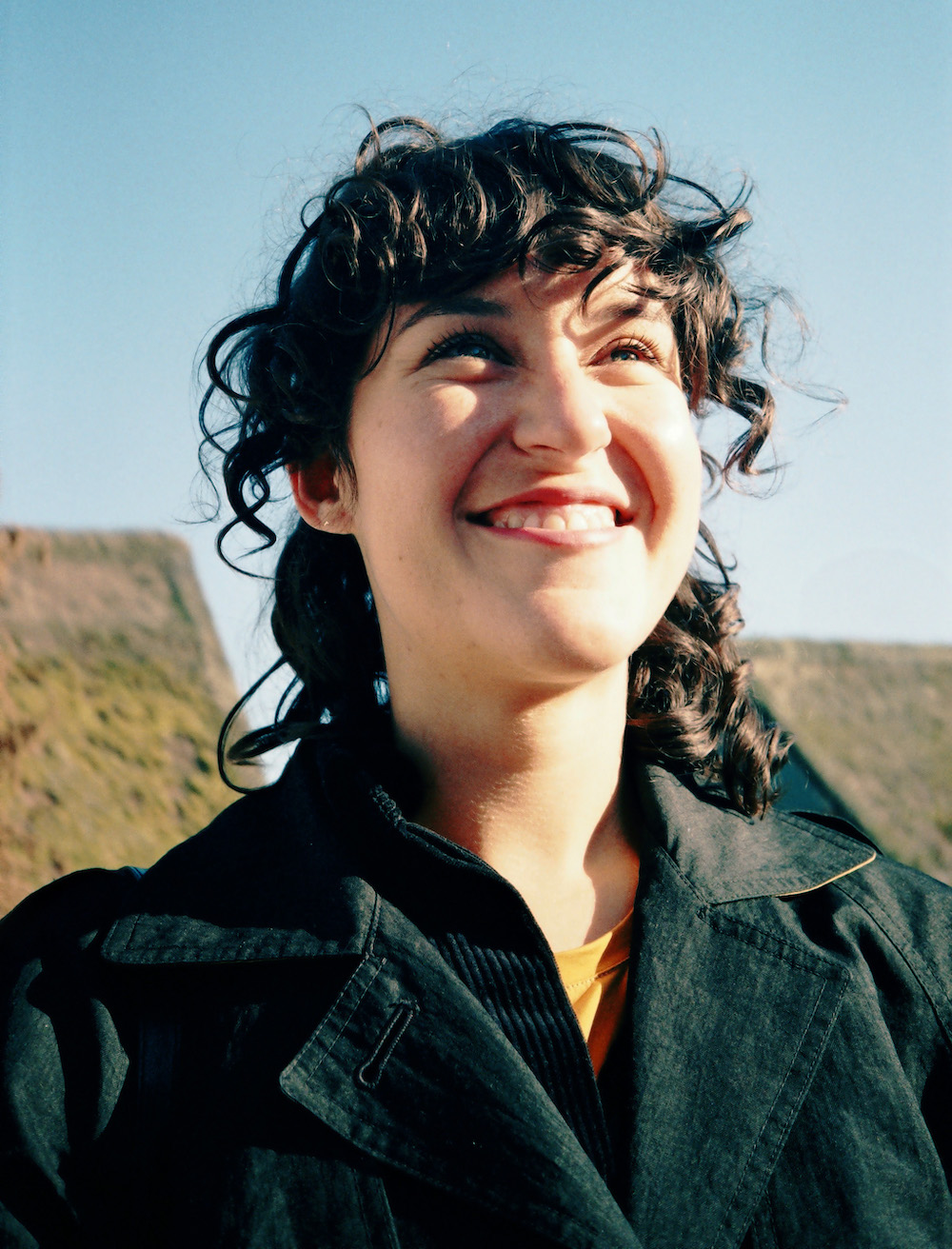
Over the last few years, Berta Gutiérrez Casaos has travelled to various cities working at the intersection of design, art, pedagogy and philosophy as a researcher, architect and curator. Now based in Berlin, where she founded the collaborative studio forty-five degrees, she develops international spatial research projects based on materiality and thought. Trained as an architect, she has always tried to question the limits of the disciplinary and to reflect on themes such as the commonplace, informality, the production of space, its scales and its inherent politics. Art and writing have genuinely accompanied her throughout her career and have become an essential part of thinking about spatial practice in other ways. From a multidisciplinary profile, he understands the intersection between arts, science and design as a crucial issue to think some key questions in the current crisis. He has worked in institutions such as TBA21 Thyssen Bornemisza Contemporary Art, Matadero Madrid, or Medialab Prado, and collaborated with KW Institute of Contemporary Art, CCCB in Barcelona, Uversität der Kunste in Berlin, Akademie Schloss Solitude or the Universidad Politécnica de Madrid.
"A desk is a dangerous place from which to watch the world" (John Le Carré)